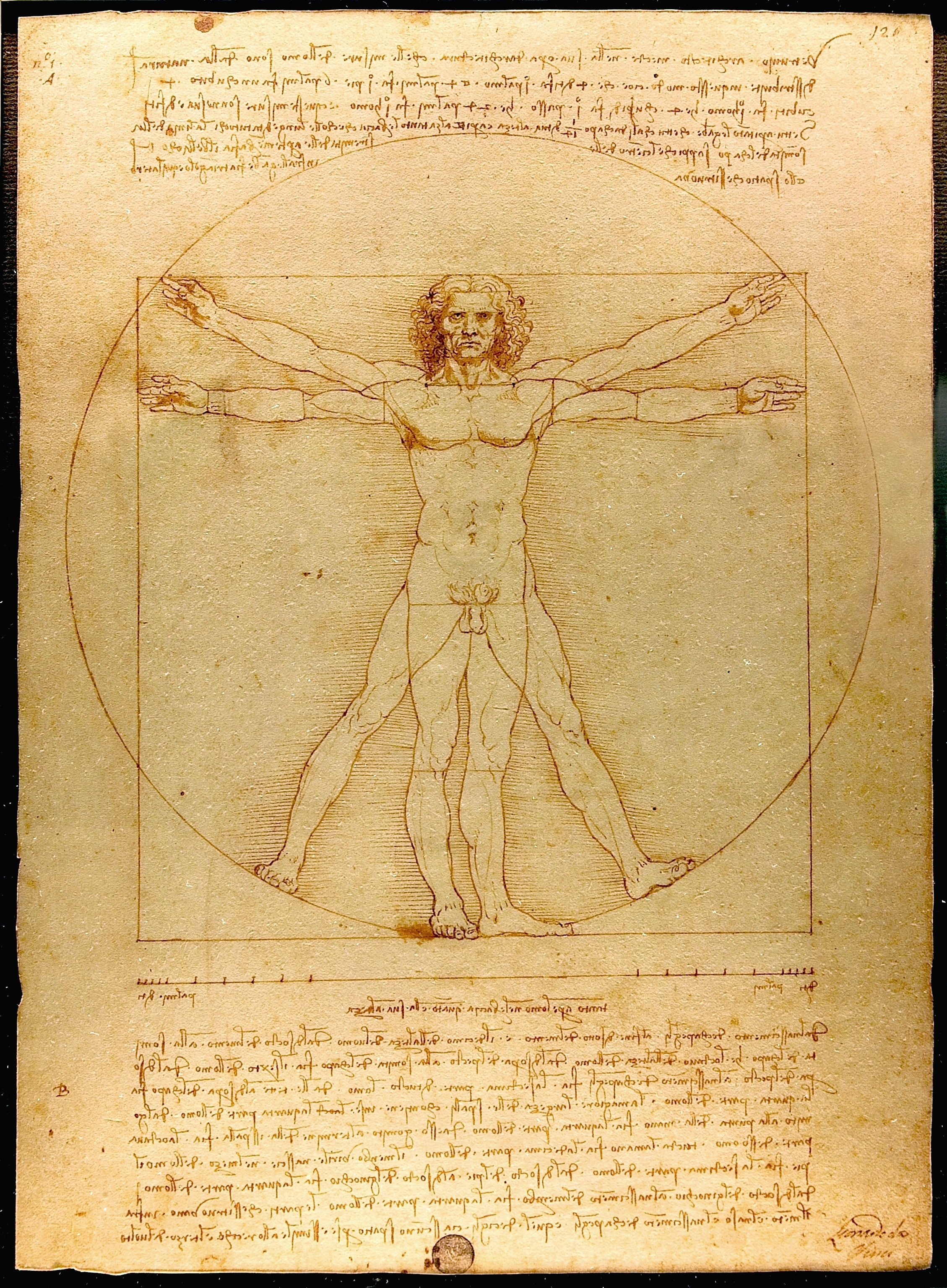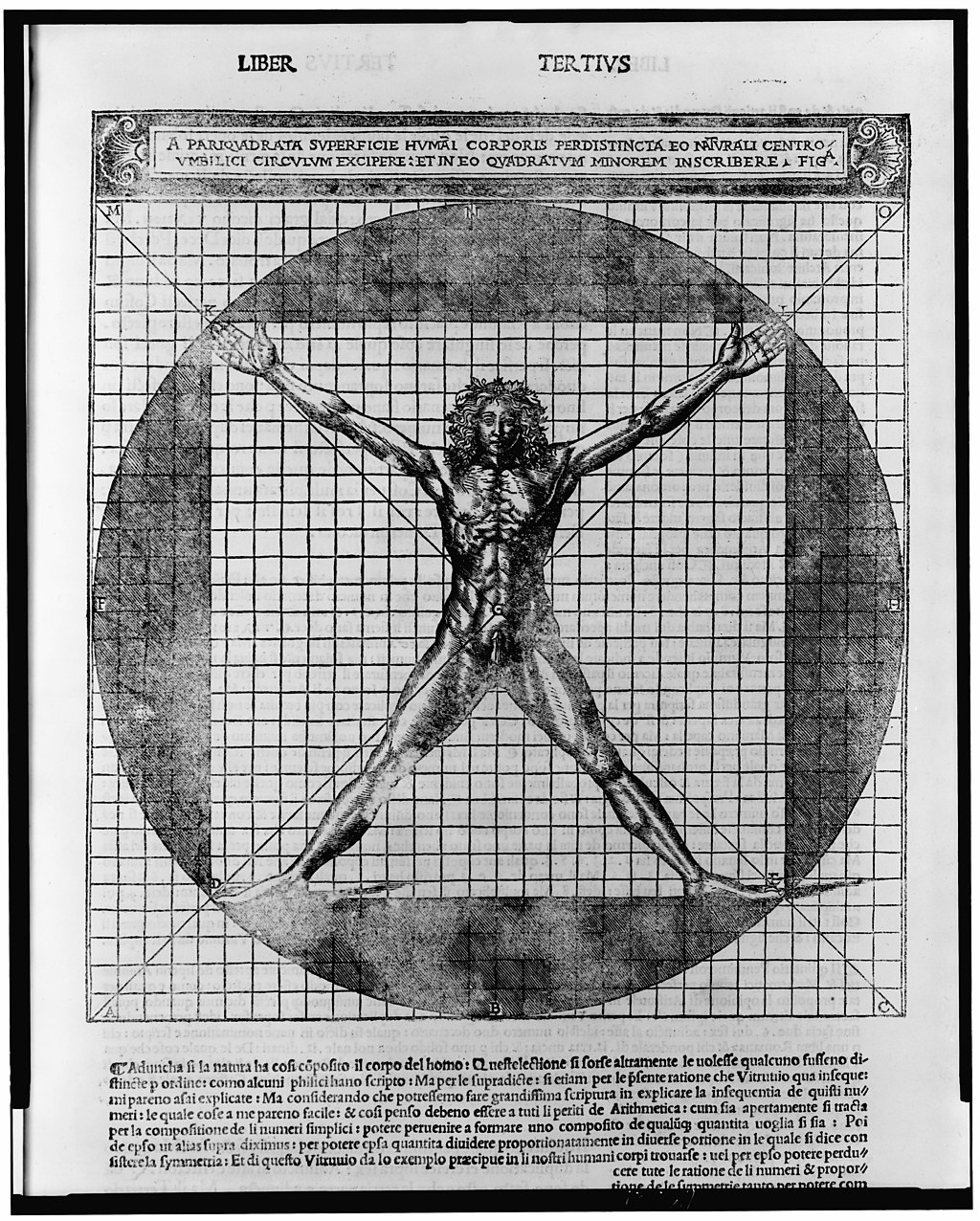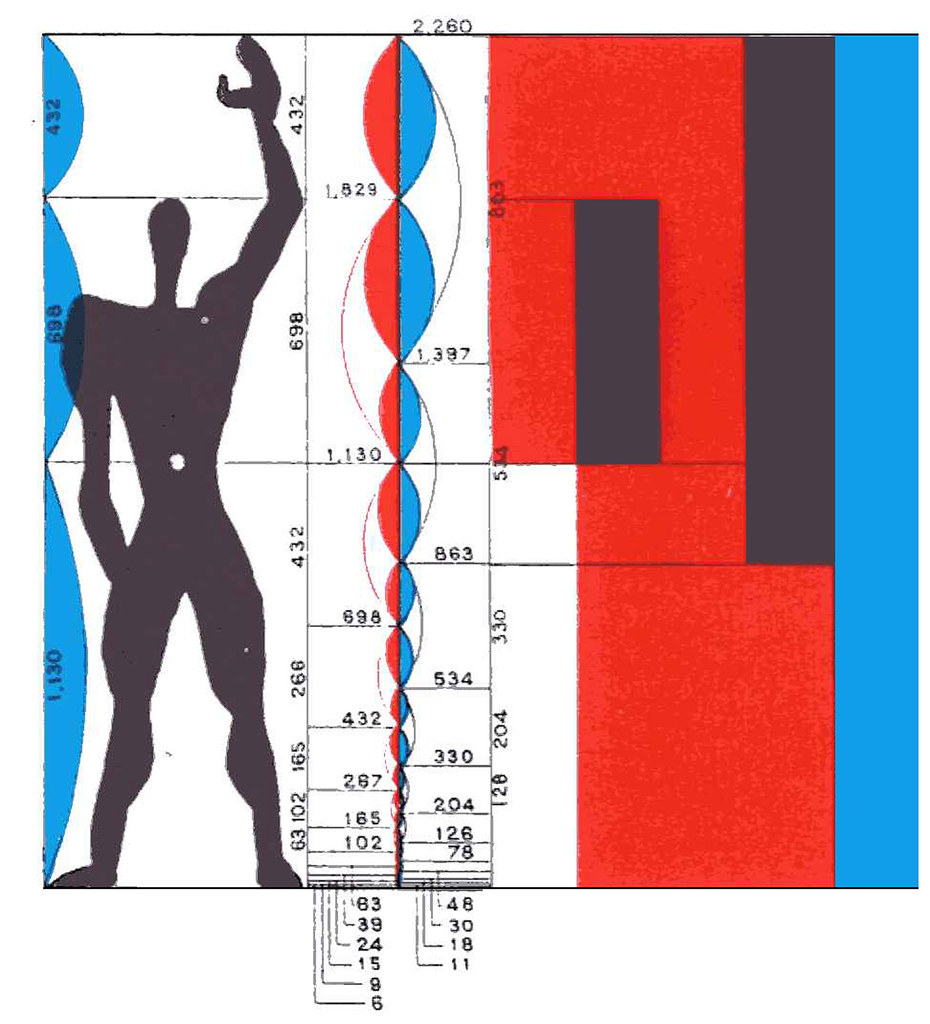Vitruvian Man, LEONARDO DA VINCI, Renaissance, 1500 AD
Designed by Leonardo da Vinci in 1500 AD, this image is often connected to the beginning of the RENAISSANCE. The Renaissance is characterized by the mathematical organization of buildings and landscapes. Designs from this era are rather idealized and static, most often with a clear central axis or point of organization. The VITRUVIAN MAN is a drawing depicting the human figure inscribed within the two shapes of the circle and square (image 1). The arms and legs are outstretched radially reaching to the edges of the circle. The center of the circle is the navel on the figure. The navel is considered a heavenly center compared to the second center in the organization. The arms and legs are outstretched perpendicular to the edges of the square. The groin is the center of the figure in relation to the square. Both shapes have their own center, slightly shifted from each other yet connected through the human figure. Proportions defined in the Vitruvian Man can extrapolate to all designs including architecture, landscape architecture, and city plans such as the ideally organized Sforzinda. The name of the drawing comes from the Roman architect Vitruvius.
 Image 1: Vitruvian Man drawing (depicting a human figure inscribed in a square and circle)
Image 1: Vitruvian Man drawing (depicting a human figure inscribed in a square and circle)
Not to be overlooked is the scale line below the figure. The essence of the Vitruvian Man is the relationship of anthropomorphic proportions to built designs. The premise of the design seems simple, yet sophisticated. Many other designers have attempted unsuccessfully to create an enhanced version of daVinci’s Vitruvian Man. Cesare Cesariano added a grid to the organization of a human body inscribed within the circle and square (image 2). Though the human body does employ mathematical relationships, our bodies are not systematically reduced to an even grid. The Cesariano image has unusual proportions of exaggerated feet and hands and a diminished size head.

Image 2: Cesare Cesariano Vitruvius grid organization
Other architects were more successful in their interpretation of the Vitruvian Man. The Modulor of LeCorbusier is an iteration of the Vitruvian Man relating human scale to design (image 3). The lines to the right of the image relate proportions from the Modulor to an expandable scale of the design of a project. This idea clearly relates to the PRECEDENT of the Vitruvian Man though it is not inscribed within any shapes. Most importantly, the human figure is used as a scaling device.

Image 3: LeCorbusier’s Modulor iteration of the Vitruvian Man
Media Attributions
- Vitruvian Man Drawing © Leonardo Davinci is licensed under a Public Domain license
- Cesare Cesariano Vitruvian Man Drawing is licensed under a Public Domain license
- LeCorbusier Modulor drawing © Forgemind ArchiMedia is licensed under a CC BY (Attribution) license
The rebirth of architecture, art, mathematics, literature, science and rational thinking inspirited from the Classical Greece and Roman eras. Renaissance comes from the Italian word renacare, meaning rebirth.
Inscription of a human figure within a circle and square. Arms and legs outstretched radial to the circle, perpendicularly to the square and implying two centers, navel and groin respectively.
a design that comes before and justifies later designs
